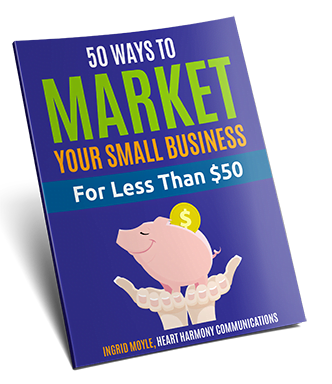Writing effective web copy is 70% strategy, 10% creativity and 20% the words you choose. This post helps you to work through the strategy and gives you a checklist to help you write fabulous web copy.
Most small businesses face the same shocking realisation at one time or another. They book in to get their first website and then discover that their web designer doesn’t write the words for their website for them.
There are the faced with two options. They can hire a web copywriter to do it for them or leap into a bit of DIY web copywriting.
If you are keen for a bit of DIY web copywriting, here are a few tips to get you started.
Step 1: Know Yourself and Your Website Goals
I am not going to go all Tony Robbins on you here, but before the first pixel is posted and the first word tentatively inked, you need to be clear on who you are and what you offer.
You also need to spend time clarifying what result or outcomes you want your website to deliver for you.
But don’t go anywhere near your keyboard to jot those words just yet. This first step is purely your initial thinking to help your business gain clarity and focus.
This early stage of your thinking should never appear anywhere in public.
Many businesses go through this process and then hit publish and wonder why their door is not being beaten down.
Why? Effective copywriting is 70% strategy, 10% creativity and the balance the words you use on the page.
That’s why our posts on copywriting and web design always focus so heavily on helping you get the strategy right.
If you don’t get the copywriting strategy right, then you often end up writing only about yourself and leaving the customer totally out of the equation.
Let’s be blunt. No client is as enamoured of your business as you are.
If you write something along the lines of “Our goal is to be the best in the world at producing widgets. We want to meet with new clients in order to engage and build future relationships for when they need widgets,” your potential clients will be gone faster than a politician’s promise one week after an election.
Some questions to get you started:
- What actually does your business do? (Don’t laugh. This is the hardest question for any business owner to answer.)
- What makes people call your business?
- What common questions do they ask?
- What issues do they bring to your business that they want to be fixed?
- How do they feel when they contact your business?
- Are your best customers young/old; male/female/other; where are they located?
- How do you want them to feel when they visit your website?
- What do you hope people will do when they get to your website?
Step 2: Know Your Competition
Next, put on your Sherlock hat and go exploring through your competitor’s websites across the first two pages of Google. (I also check out competitors in other geographic areas just in case they have better ideas than the locals do.)
Some things to look out for:
- What have your competitors included on their websites and to what depth?
- How have they structured their pages? What is included on each page?
- What sort of images and design have they used?
- What are the word and topic themes they have used across their site?
- Do they offer downloads or other incentives to get people to join their mailing lists?

Step 3: Know Your Clients
The next stage of effective web copywriting is when you get clear on what your clients are looking for. This is where you need to get some clear data on their needs and wants and the language they use.
You need to specifically know the words they use when looking for a product like yours.
We often get caught up with our whizz-bang services and the funky industry words that we use to talk about our business with our colleagues. In our minds, we imagine the average punter knows precisely what we are talking about, and that everybody uses the same words we do.
Wrong.
Pop over to Google and type in the words you think people are looking for when they think of your business. Check out the listings that pop up. Do they look about right or slightly “off”?
I had one client that swore black and blue that his industry words were right. We did a quick check and found that most people using those words were referring to something that we don’t talk about in polite society … and definitely not in front of the children.
If you want to go a bit deeper with your numbers, you can also get a bit fancy and take the Google AdWords keyword planner for a test drive. See what else comes up around those words – and how popular the terms are. It’s not great to hold the top spot in Google for a term that only has two people a year looking for it.
Bottom line is if every person and their Labrador dog calls something related to your business Wonderwidget, and they type in Wonderwidget when they go looking for you, then by golly you’d better be talking about Wonderwidget.
Figure out the words that the regular people use – and use them. Don’t try to be all posh, corporate or flowery in your word choices.
You also need to know the concerns and issues they have that need to be addressed before your potential clients will buy. You need to walk a mile in their shoes and empathise with their problems and their worries.
One way to do this is to look at the testimonials people give you and check out what people comment on.
You can also look at reviews on product review sites and social media sites for your competitors to see what people comment on for your competitors and why they chose them. Browsing product review sites feedback and testimonials gives you a fantastic insight into why people buy, what turns them off and concerns they have with your industry.
One size does not fit all. The concerns and language that a professional person uses are different to the interests of an office admin or a mum trying to fit in buying your product or service around looking after kids and holding down paid employment.
Unless you understand this difference and target the words you use accordingly, your results will be wishy-washy and vague.
But don’t think this is enough and you can start writing yet: You are STILL refining your thinking.
Step 4: Know Your Site Structure
Once you have the lingo out of the way, one of the most important things you can do for your clients is to make it easy for them to find what they are looking for on your site.
Think for a moment about the pile of papers in your in-tray – all fighting for attention and jumbled together.
You may know where everything is, but if you ask your admin person or your dearly beloved to find something, they will have to go through every single document trying to track it down (usually muttering under their breath while they are doing it).
Don’t be that person on your website!
Work out what things logically go together. Which topic areas relate to each other and which ones need to stay apart?
I like to do this with a post-it note sort. Stick all the different topics/themes on post-it notes and then shuffle them around on a wall until it makes sense.
What should go on your home page (the introduction to your site)? What should go on your services page? What should be included on your About Us page? What do you need to include on your contact pages? (Yes, these are links to articles on all of these pages to help you plan your content).
Then do a reality check. Ask friends, family and tame passers-by “If you were looking for XYZ, would you look under widgets or wodgets?”
Step 5: Know Your Page Structure
Once you know your overall site structure, next, map out where things logically should flow on the individual pages.
Leaping from idea to idea on a page with no apparent logic like a two-year-old on a “But Why” kick, is not the way to win clients.
Start with your big idea (just so people know they are in the right place), and then build your thoughts piece by piece to an excellent logical conclusion.
Work out what bits should go at the top to make sure that your clients know that you understand them and have a solution to their needs, which bits should go to show your credibility, and where should detailed information about your products or services sit.
Did you notice that we still haven’t got to the actual writing bit yet?

Step 6: Work Out Your Call to Actions
Remember back at step 1, where we worked out what outcomes we wanted people to do when they reached our website?
This is where you take that down to a page by page level. Work out what action you want the person to take at the end of each page on your site.
Even if you are writing for a convention of psychics, and the words you create are superbly brilliant, you need to help your readers know what happens next.
Make your call to action clear, unambiguous and powerful. Don’t fade away into a whimpering nothingness.
The clearer you are, the more likely your potential clients will act on it.
By knowing the actions you are looking for before you start writing, you help to focus the words you will be writing on your pages.
Read more about what words to use on call to action buttons.
Step 7: Write the Words
The final stage is putting into words how your product or service meets the needs of the different clients you potentially serve.
Go into writing with a problem-solving mindset and ensure you cover how you can make a difference to your clients through meeting their needs.
By starting to write at this stage, you will naturally find yourself writing for the client, and not yourself.
You will end up with stronger and more effective writing as the clients will get clear information about you and how you can help them – which will result in more genuine enquiries and sales.
A Word on Marketing Ethics
And while we talking about genuine – yes, there are hundreds of manipulative psychological tricks you can to do attempt to hypnotise people into buying.
My view is that if you have to trick someone into giving you money, then you are a scammer and not an honest and authentic business owner.
My philosophical approach to marketing is to tell the truth, present the facts and do it in an open, ethical and transparent way.
Marketing should not just be propaganda under a different name. When done properly, it can nurture and grow society, rather than rip people off for a quick buck.
Remember, People Don’t Read on the Web – They Scan
One key thing that is useful to remember when writing for the web is that people read differently online than they do in print.
When people land on your website, they do a quick glance around your site, and unless the thing they are looking for is not only glaring them in the face, it is surrounded by spotlights and a herd of dancing wildebeest, then they hit the back button and disappear into the distance.
People generally give your website copy the once over scan and then flick back to read more closely key bits that grab their eye.
This means your layout is just as important as your words, which is why you need to:
- Break up text with headlines and sub-headlines.
- Use bullet points.
- Add in visual elements such as photos, different font sizes, lines, etc. to break up the text. (Yes, writing for the web is as much about the visual bits as the word bits).
Check out our bulletproof copywriting formula or how to write about yourself if you can’t write if you are struggling with how to write the first draft.

Web Copy Checklist
- Write in short sentences & paragraphs.
- Use conversational words.
- Write in active voice and not passive voice.
- Use correct grammar & spelling.
- Write like your brand speaks. Are you calm and measured, or bubbly and outgoing?
- Use headlines and sub-headlines for readability.
- Be consistent with headlines throughout: All title case or sentence case.
- Ensure the page titles and headlines accurately reflect the content.
- Use bullet points to highlight key concepts.
- Write about the reader and not you. Refer to “you” and not “I/we/my”.
- Have a logical flow of ideas.
- Include sentences or words to help transition between sections.
- Add visual elements to highlight concepts.
- Don’t use jargon if you can avoid it and explain it if there is no other choice.
- Be ethical and authentic.
- End with a call to action.
Last Thoughts
Web copywriting is all about making it easy for your potential clients to find you, and then to demonstrate that you know and understand them and their needs.
It is all about helping them see the match between what you offer and what they are looking for, and then guiding them to the next logical steps.
Web copywriting, when done well, is an experience of empathy put into words. When you genuinely get where someone is coming from, they are more likely to see themselves as a match for your business.





